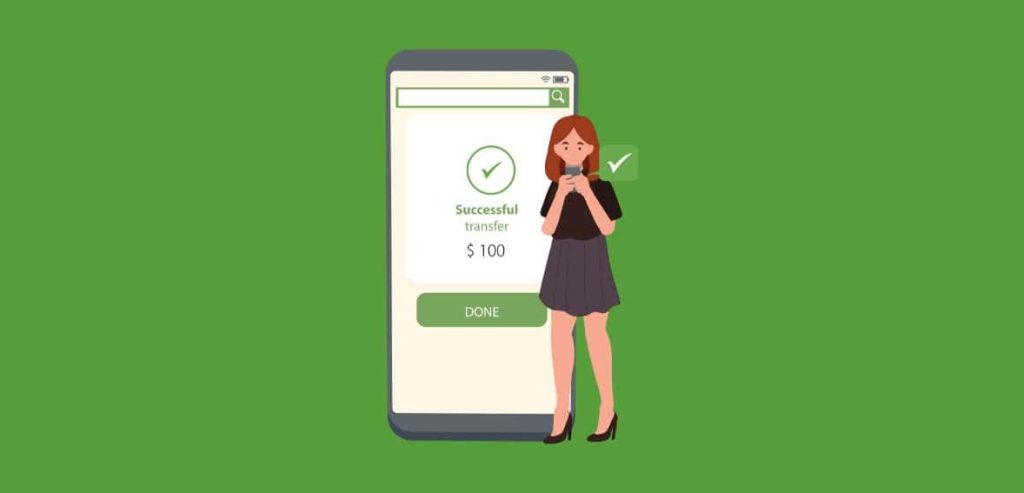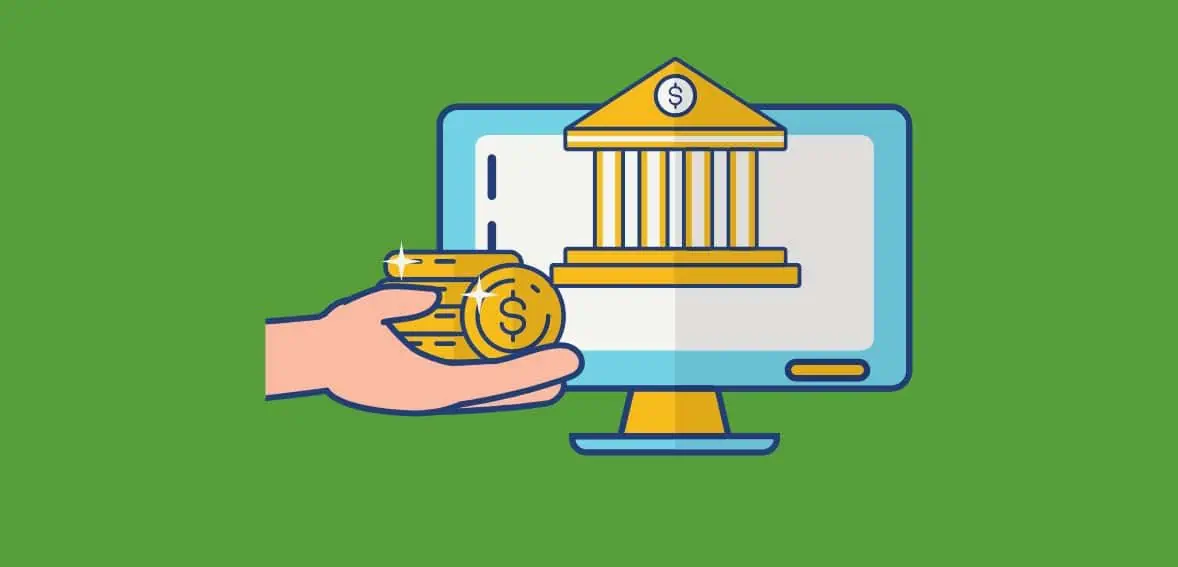When it comes to sending money, you have several options available. You can use a peer-to-peer (P2P) platform or go for a bank transfer depending on your preferences and the nature of the transaction—whether personal or business-related. However, bank transfers are generally considered more preferred for business transactions.
But what exactly is a bank transfer? While it may seem like one of the ways to move money, you might have questions about where to start and what information is required for a transfer. This article will provide all the details on initiating a bank transfer. So read on!
Understanding Bank Transfers
A bank transfer is a method to move money from one bank account to another. It is typically an advantageous choice as it is often free of charge. This electronic transfer provides a swift and secure alternative to cash transactions, requiring only the recipient’s bank account details. Customers typically initiate a bank transfer using one of the following methods:
- Telephone banking
- Online banking
- Through a dedicated banking app
- Visiting the bank, completing a payment form, and check in person
- Mailing a payment form with a check to the bank
Bank transfers are transactions initiated by the buyer (customer), with the payment “pushed” to the seller’s bank account. This method is beneficial for sending money domestically or facilitating direct deposits with minimal transfer fees. As long as there are sufficient funds, the transfer can be initiated through any of the mentioned methods.

Various approaches exist for transferring funds between banks, and institutions may have specific rules based on the chosen payment method. It is crucial to possess accurate information for a successful transfer. This characteristic brings forth essential implications:
- Customers must instruct their banks to initiate the payment via a confirmation, whether through a form plus an attached check with signature, password authentication (online), or via in-person request.
- Once made, the customer cannot reverse a payment; any refund requests must be directed to the merchant.
- Despite relying on the customer for payment completion, bank transfers are highly secure and entail no reversal risk.
Globally, banks are increasingly enabling customers to initiate bank transfers online. While this doesn’t alter the core principles of a bank transfer, it provides quicker processing through the banking system.
How Bank Transfer Works?
Bank transfers are a prompt and effective method for electronically moving funds between entities. You have several ways by which you can initiate these transfers, including mobile payment apps, websites, or in-person via check. To ensure a smooth transaction, it’s crucial to gather specific critical information beforehand:
- The desired payment date
- The name of the business or individual you’re paying
- Routing number
- The account number of the individual you’re paying
- Payment type
- A payment reference for clarity on the transaction purpose
With this essential information, the sender completes the bank transfer process by following the preferred bank transfer type steps. Then, the sender’s bank will directly engage with the recipient’s bank, sharing account details, the intended amount, routing number, bank name, and other pertinent recipient information. Upon receiving authorization, the sender’s bank deducts the transfer amount from his/her account. Subsequently, instructions are sent to the recipient’s bank, which credits the transferred amount to the recipient’s account. This systematic approach ensures a reliable and secure electronic fund transfer.
Different Types Of Bank Transfers

Bank transfers can be broadly classified into domestic (or national) and international. Domestic transfers pertain to the movement of funds within the same country, encompassing activities such as paying bills or transferring money to a friend. On the other hand, international money transfers involve sending funds to a different country, typically requiring currency exchange. Here’s a breakdown of each transfer type:
Domestic Bank Transfers
US bank transfers can be categorized into ACH transfers and wire transfers, each operating on distinct networks.
ACH Transfers:
An ACH transfer refers to the electronic movement of funds from one bank account to another through the ACH (Automated Clearing House) network. This encompasses various transactions, such as person-to-person transfers, bill payments, and direct deposits.
In an ACH transfer, three primary entities play key roles—the Operators (either Electronics Payment Network (EPN) or FedACH), Originating DFI (ODFI), and Depository DFI (DDFI).
The Automated Clearing House oversees these entities, the central authority facilitating ACH transfers. This nationwide network efficiently processes and clears ACH transfers among participating financial institutions. The ACH collaborates with both sides of the transaction, ensuring the secure transfer of funds and upholding the system’s integrity by enforcing regulations governing ACH transfers.
Typical applications of ACH bank transfers include:
- Payroll
- Online bill payments
- Benefits for Social Security
- Tax refunds or other payments
ACH transfers operate by utilizing the ACH network to facilitate money movement from one bank account to another. Imagine ACH transfers as a form of digital mail dispatched in bulk. Each transfer request is encapsulated as a message within a batch of outgoing mail by the initiating bank (ODFI).
Subsequently, ACH operators reassemble each message into a batch intended for the receiving bank (the RDFI). This routine occurs every business day at predetermined intervals.
There are two types of ACH money transfers:
- ACH Debits:
Definition: Requests for the ACH network to “pull” money from an account not under the requester’s control, like auto-bill payments. And 93% of Americans receive their paychecks via ACH direct deposits.
- ACH Credits:
Definition: Requests to “push” money from the requester’s account, commonly used for payroll or government benefit programs (often termed as “direct deposits”).
Wire Transfer
Wire transfer is a method of electronically moving funds from one person or entity to another, offering a swift and secure way to transfer money internationally or within the same country. Typically facilitated by banks, these transfers involve exchanging information between two banks, including the recipient’s identity, account number, and the designated amount.
Wire transfers are crucial for those needing a rapid and secure money transfer, especially when geographical proximity is not a factor. They also enable the seamless transfer of substantial sums, with limitations set by firms that are generally relatively high.
These transfers operate through systems such as the Fedwire or CHIPS, which stands for Clearing House Interbank Payments System. Here’s how they work:
- Fedwire:
The Fedwire is a real-time settlement system that employs central bank money for electronic fund transfers among businesses, consumers, banks, and government agencies. In the United States, Fedwire transfers are widely used.
- CHIPS:
Every financial market has a clearing house responsible for validating and finalizing transactions between buyers and sellers. CHIPS serves as the clearing house in the US for large bank transfers.
International Bank Transfers
International bank transfers between the United States and other countries primarily rely on SWIFT. A SWIFT transfer is a message containing payment instructions from the sending bank to the receiving bank. SWIFT, which means “Society for the Worldwide Interbank Financial Telecommunications,” is the world’s largest and most widely used financial messaging system.
In 1973, SWIFT connected over 11,000 banks and financial institutions across more than 200 countries. The management of this extensive network falls under the purview of central banks in G-10 countries, including Belgium, Canada, France, Germany, Italy, Japan, The Netherlands, Sweden, the United Kingdom, the United States, and Switzerland.
Beyond the United States, various countries have their systems for domestic bank transfers. Here are a few examples:
- Clearing House Automated Payment System:
CHAPS is a bank-to-bank payment system exclusively designed for sterling transactions in the UK. CHAPS is a real-time gross settlement payment system that ensures efficient, irrevocable, and risk-free settlement payments.
- Bankers’ Automated Clearing Services:
BACS serves as a payment system facilitating the transfer of funds between banks. BACS payments can take the form of either direct debits or direct credits. Regulated by Pay.UK, the UK’s premier provider of payments infrastructure, BACS, processed over 4.6 billion direct debit payments in 2021.
- Single Euro Payments Area
SEPA represents a European Union initiative to simplify and cost-effectively facilitate payments across the Eurozone. By standardizing the process for cashless euro payments throughout Europe, SEPA aims to establish a unified market for euro-denominated payments. This initiative enables European consumers, businesses, and public administrations to conduct credit transfers, direct debit payments, and card transactions under consistent and standardized conditions.
Costs Associated With Bank Transfers

Each bank defines its fee structure for transferring funds to other institutions, and businesses often encounter fees from their payment processors similar to those associated with credit card payments. Here’s a breakdown for each type of bank transfer.
1. ACH Direct Debit:
ACH transfers typically come with fewer charges compared to alternative transfer methods. However, it’s important to note that certain banks and financial institutions may impose transaction or service fees for ACH transactions. For example, Braintree, a company under PayPal, provides ACH direct debit services. The standard pricing for online transactions through Braintree involves a per-transaction fee of 2.9% plus $0.30 based on the transaction amount.
2. ACH Credit:
Certain financial institutions impose a flat fee, typically $0.20 to $1.50 per transaction. Also, some charge a percentage, usually around 0.5% to 1.5% of the total transaction value.
3. Wire Transfer Fees:
Wire transfer fees vary from free to $50, contingent on factors such as the financial institution, transfer amount, and destination.
4. International Wire Transfers
International wire transfers offer a secure and efficient method of transferring money across borders. Nevertheless, the expense associated with international wire transfers fluctuates among banks and may reach up to $50 or 1% of the total transfer amount.
Benefits Of Bank Transfers
- No Chargebacks or Reversals:
One significant advantage of bank transfers is the absence of payment reversals or chargebacks. In contrast to credit card payments, where the risk of chargebacks is ever-present, the customer cannot reverse bank transfers. Suppose a customer is dissatisfied with their purchase. In that case, the onus is on them to contact the business for a refund, offering the business an optimal opportunity to address concerns and potentially prevent a funds reversal. Refunds, if needed, give businesses greater control over the process than chargebacks.
- More Secure:
Security is a top priority in financial transactions, and bank transfers excel in this area. Utilizing bank transfer services ensures the safeguarding of funds, provided the entered details are accurate. Unlike cash transactions vulnerable to theft or loss, bank transfers create a secure digital trail, facilitating easy traceability of funds. Stringent security measures implemented by banks protect against fraud and unauthorized access, bolstering the shield against potential threats.
- Swift Turnaround:
Time efficiency is crucial nowadays. Bank transfers offer a notable advantage with swift turnaround times. Unlike traditional methods involving physical processes, bank transfers enable nearly instantaneous fund transfers. Online banking and mobile apps further streamline the process, allowing transactions to be initiated from the convenience of home or office, eliminating the need to visit a physical bank branch. This efficiency ensures prompt execution of payments and settlements.
- Customers Sometimes Prefer Bank Transfer
Businesses typically find it advantageous to embrace a variety of payment methods. Among these options, bank transfers could be the better option for customers who prefer avoiding using credit or debit cards for specific purchases. By diversifying the accepted payment types, businesses increase their potential to attract and keep more customers.
How To Ensure A Smooth Bank Transfer Process
Occasionally, errors or inaccuracies in the information provided can lead to delays or cancellations in bank transfers. This not only prolongs the time it takes for the intended recipient to receive the funds but may also necessitate restarting the entire process. Consider the following precautions to mitigate the risk of such delays or complications.
- Thoroughly Check Details:
Begin by double-checking all the details entered, with special attention to the accuracy of the account number and sort code. Incorrect information may result in funds being sent to the wrong account, posing challenges in retrieval.
- Verify Sufficient Funds:
Ensure that your account holds adequate funds to cover the bank transfer. Since the funds are debited from your account upon submission, avoiding overdrawing is crucial to prevent unnecessary and avoidable fees.
- Confirmation of Payee Warnings:
Pay attention to confirmation of payee warnings and alerts. Verify that the name provided matches the registered name on the recipient’s account. This precaution helps prevent money transfers to potential scammers and reduces the risk of fraud.
Conclusion
Bank transfer methods are important in moving funds between different entities, providing a secure and efficient alternative to cash transactions. Whether done domestically or internationally, these transfers offer options like ACH transfers and wire transfers, each with advantages and specific uses.
Understanding the importance of information in the bank transfer process is crucial for ensuring successful transactions. Customers initiating transfers must follow instructions and know that these transactions are nonreversible. While the costs associated with bank transfers may vary, their benefits, such as enhanced security, no chargebacks, and quick turnaround times, make them highly preferred by businesses and individuals.
To ensure a smooth bank transfer process, verifying details, paying attention to payee warnings, and ensuring sufficient funds are available are important. By adopting these practices, individuals and businesses can fully utilize the efficiency and reliability of bank transfers for their transactions.
Frequently Asked Questions
Q: How does a bank transfer work?
A bank transfer typically begins when funds move from one bank or financial institution to another. Instead of physical cash, the involved institutions share details such as the recipient’s information, the receiving bank account number, and the transfer amount. The sender covers the transaction cost upfront at their bank.
Q: What are the ways to conduct a bank transfer?
Various methods exist for transferring funds between accounts at different banks, including wire transfers, mobile apps, online portals, and the traditional method of writing a check.
Q: What details are required for a wire transfer in the US?
When initiating a wire transfer through a bank in the US, you’ll generally need to provide the following information:
- Recipient’s full name.
- Sender’s full name.
- Recipient’s mobile number.
- Sender’s mobile number.
- Recipient’s address.
- Recipient bank information.
- Recipient’s account details.
Q: Is a SWIFT code necessary for money transfers in the USA?
For both sending and receiving international bank transfers in the US, a SWIFT/BIC code is required when using your bank account.


